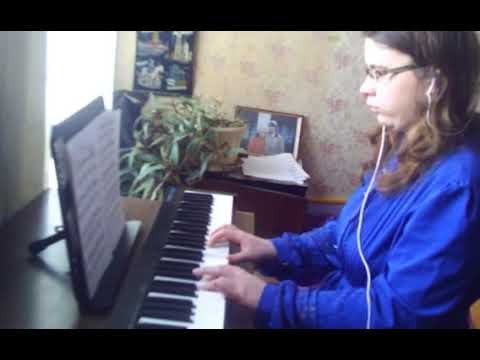It is my entry for Secrets of Organ Playing Contest on Hive (rules of this contest: https://peakd.com/secretsoforganplaying/@organduo/secrets-of-organ-playing-contest-week-109)
I played Poco allegretto by César Franck. L'Organiste 59 Pieces for Harmonium. 7 Pieces in C Major and C Minor
Score of this piece with fingering and pedaling:
https://secrets-of-organ-playing.myshopify.com/products/copy-of-poco-lento-in-c-major-from-lorganiste-by-cesar-franck-with-fingering?_pos=1&_sid=772a4fc28&_ss=r&ref=vovdfh6qpam
I use Skrzatusz sample set by Piotr Grabowski. You can read more about this organ https://piotrgrabowski.pl/skrzatusz/
César Franck (10 December 1822 – 8 November 1890).
He was a romantic composer, pianist, organist, and music teacher who worked in Paris during his adult life. He was born at Liège (now it is in Belgium, but when C. Franck was alive, it was part of United Kingdom of the Netherlands). Father envisioned him as a young prodigy pianist-composer. His father entered Franck at the Royal Conservatory of Liège, studying solfège, piano, organ, and harmony with Joseph Daussoigne-Méhul and other faculty members. César-Auguste gave his first concerts in 1834, one before Leopold I of the newly formed Kingdom of Belgium. In 1835, his father resolved that the time had come for wider audiences, and brought César-Auguste and his younger brother Joseph to Paris, to study privately: counterpoint with Anton Reicha and piano with Pierre Zimmerman. He wasn't accepted to Conservatory of Paris because of hi nationality.
More about this composer and his colorful biography you can read https://en.wikipedia.org/wiki/C%C3%A9sar_Franck
For me it took perhaps 4 days to record this video. First 3 days I couldn't play from 23 bar (division of voices in right hand). I thought, that I will never record this piece. It was like a mental block. But this morning I could do it. I can see some similarities with composer of this piece. He has failures, unsuccessful premieres of his pieces (for example premiere of "Rédemption" where he started using principles of "tonal architecture" in 1872). Also he has long periods of non creating (for me it could be periods of non recording).
I love how this piece sounds. This movement of 3 voices. in right hand 8th notes, left hand in 4th notes. As I understand, there is theme until ban No 8, after theme in other tonality and same theme like in beginning, but notes, 4th notes, that were in left hand, are 1 octave higher and in right hand. In left hand standing notes.
I know that this video is not perfect, but it is the best version that I could record. I hope you will like it :)

Beautiful, and well played! Thank you, Diana!
Thanks! Nice to hear it!
Thanks for your entry! Try to to keep the wrists higher. Maybe sitting higher would help. In 19th century music also always play legato unless indicated differently, except in repeated notes. Especially in middle voices.
I tried to play as much legato as it is possible for me. But in some places it was very difficult
I know. Pay attention to the correct fingering.
Your post has been supported and upvoted from the Classical Music community (Subscribe at peakd and Steempeak) as it appears to be of interest to our community. We also support jazz and folk music posts!
If you enjoy our support of the #classical-music community, please consider a small upvote to help grow the support account!
You can find details about us below.
The classical music community at #classical-music, Peakd, Steempeak and Discord. Follow our community accounts @classical-music and @classical-radio or follow our curation trail (classical-radio) at Hive Vote or SteemAuto!